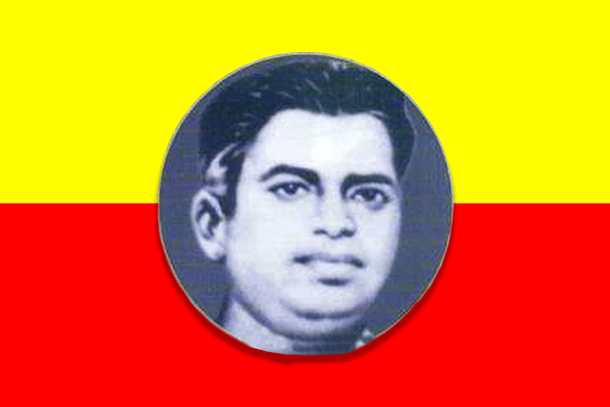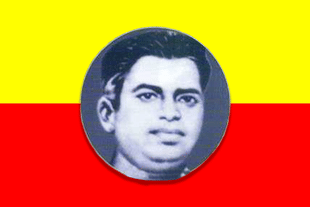News Brief
Remembering Ma Ramamurthy, The Flag-Bearer Of Kannada Consciousness
Harsha Bhat
Mar 11, 2020, 05:28 PM | Updated 05:28 PM IST
Save & read from anywhere!
Bookmark stories for easy access on any device or the Swarajya app.


The red and yellow flag flutters across Karnataka and has come to embody Kannada pride. Although it isn’t the official flag, it is the one hoisted across the state on Kannada Rajyotsava, the state formation day.
Yet, the name of the man who designed it is sadly relegated to the pages of history.
Born on this day (11 March) in 1918, ‘Kannadada veera senanani’ (Kannada’s brave soldier) as he was hailed as, writer and Kannada activist Ma Ramamurthy was the one who created the ‘arashina-kumkuma’ (turmeric-vermillion) inspired flag for the language movements that he championed in the 1960s.
Born to freedom fighter and writer Seetharama Shastri, Ramamurthy followed in the footsteps of his father who also ran Veerakesari, a magazine started to propagate Gandhian ideals that had inspired him and promote the freedom struggle and ideas of independence.
Post Independence, in a bid to popularise Kannada and its reading among common people, he wrote numerous detective novels in the 1950s.
As listed by the Kannada Sahitya Parishat, he wrote more than 150 novels, along with many historical ones which dealt with various characters. They had vivid descriptions of different regions of the state as well as featured various social movements.
His oratory skills, matched his writing, and his persona matched his tall personality. In the 1960s, even a decade after the formation of the state in 1950, Kannada was yet to find its place of pride in the state.
Given the linguistic heterogeneity of the state owing to its spread across different provinces prior to the reorganisation, as well as the internal linguistic diversity with regional languages like Tulu, Kodava , Beary, Areybhaashe, apart form the countless indigenous ones, Kannada which was the official state language had to make do with being just that.
But the rising importance given to languages from other states in cinemas and the like resulted in the creation of this flag. Another reason for the flag to come into existence was the growing presence of a Dravidian party flag from a neighbouring state. It was hoisted by ‘migrants’ across Bengaluru against which Ramamurthy and others took a padayatra.
It would be the symbol of the Kannada movement that was to follow.
Although the initial version also had a stalk of paddy in the centre, the one with red and yellow bands was used finally. He also launched a party in 1966, the Kannada Paksha and used the red and yellow flag as the party flag.
It is this that proved to be a bone of contention for the use of the flag as the state flag when there was a demand for the same in recent times.
Ramamurthy also pioneered the Rajyotsava celebrations in the state. Over a hundred Kannada organisations and more than 10,000 people were said to have taken part in the three-day celebrations that he led in 1963.
It was only after his call for public to boycott work at government offices demanding the declaration of 1 November as a public holiday, that the government is said to have announced the same from 1967.
It is not officially accepted as the state flag as the present government has announced that it is no longer pursuing the issue. However, this weave of red and yellow strands of Kannada language pride conceptualised by Ramamurthy successfully invokes ‘Kannadaness’ across the state even though very few people today may have even heard of its designer.
Harsha Bhat is an author, linguist, content strategist, and a compulsive chronicler of Bharat's civilisational heartbeat.





